Why Select Electric Showers?
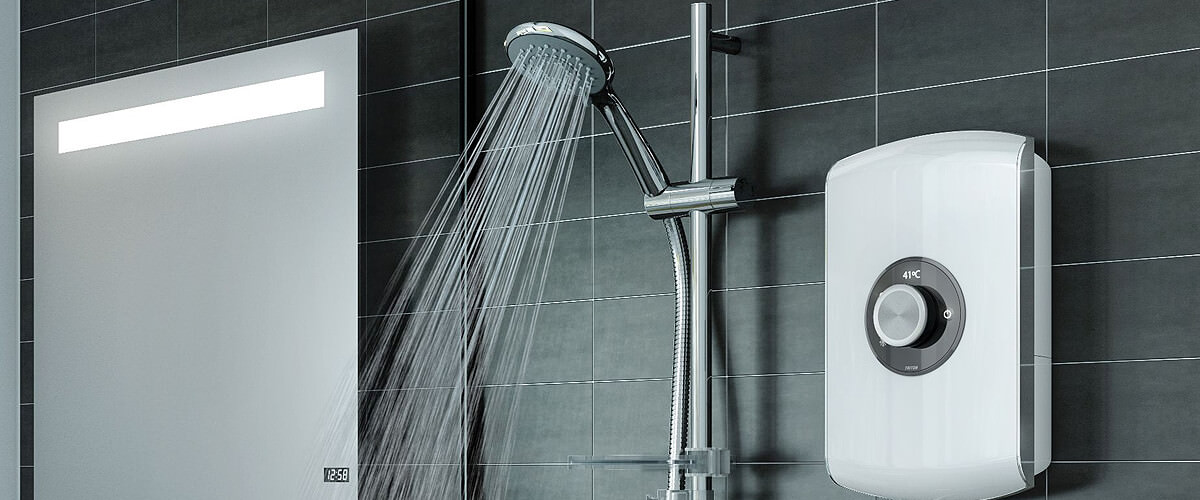
Over the last forty years, bathing habits in the UK have changed considerably. Bathing has gone from being a maybe a twice-weekly operation to an occasional luxury for relaxation. Showering has replaced bathing as the most popular personal hygiene routine. For many people, electric showers have proved to be the simplest way to have a shower installed in their home.
Although they have some minor disadvantages, such as slightly lower pressure than mixer showers, and they may attract a significant installation fee when done professionally, they are relatively inexpensive and very convenient.
Electric showers simply take cold water and pass it through a large heating element before sending it to the spray head, and ultimately all over you. The larger the kilowatt rating of the model, the more water it can heat in a given time, and the more hot water is sprayed out of the shower head. As the water is heated in the shower unit, you only heat the amount of water you will use, and you don’t have to wait for hot water to arrive from your boiler. This means that you don’t waste money on your electric bill by heating too much water, or on your water meter by running cold water through the system before the hot water arrives. All of this is independent of your domestic hot water boiler, so if you are unlucky enough to have a boiler breakdown, you can still enjoy a hot shower.
While the basic operation of electric models is quite simple, we offer a range of additional functions to make your shower more comfortable or easier to use. Many have thermal cut-out switches so that if someone inadvertently runs a tap while you are showering, the unit will cut out to prevent any scalding incidents. Others have pressure boosting pumps that help you have plenty of hot water if you live in a low water pressure area. You can even get showers with coloured LEDs in the shower head which tell you when the water is the right temperature!
Digital Showers
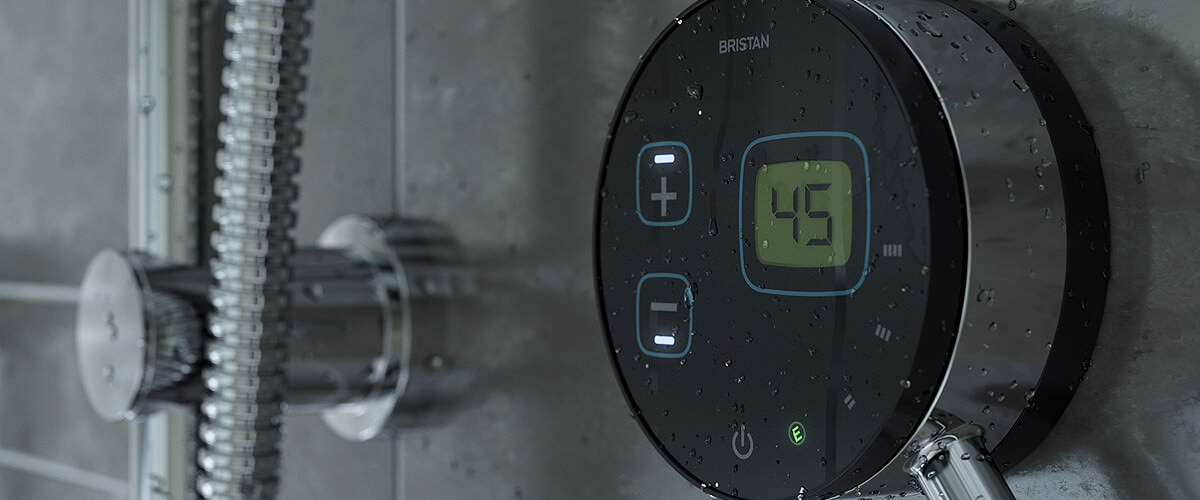
Any shower, digital or otherwise, is a long-term investment, and the differences are massive. We can provide just about any kind of digital shower, and combining such a wide range with extensive staff knowledge means that it really should be the first port of call, not just for buying the product, but also for getting expert knowledge on just, which shower will be perfect for your needs.
They are not without their disadvantages; costs are still high, and like any computer hardware, something that runs software comes with its set of problems. But there's no mistaking that digital showers are making appearances in more and more homes in the UK.
Tower Showers
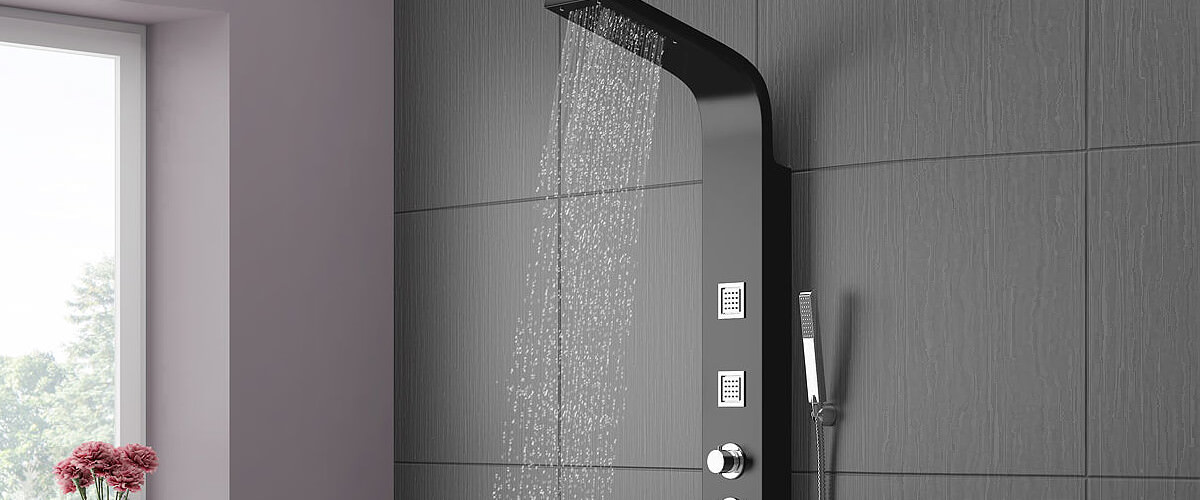
Hydrotherapy isn’t limited to hot tubs. Think about having all the advantages of a whirlpool bath translated to your daily shower. You might not have the time for a luxurious soak every single day, but when you install a tower shower, you can enjoy the same spa-level comforts and health benefits in minutes.
Tower showers, also known as shower panels, combine the functionality of a regular overhead shower with a series of body jets. The massage action of these multiple shower heads boosts circulation, loosens tight muscles, soothes sore joints, and ups the overall enjoyment factor exponentially. If you have chronic back troubles, a good tower shower can help immensely. You can also choose a model with an additional hand-set for the ultimate in showering flexibility.
The installation of these products is surprisingly straightforward. In a tower shower, the entire unit connects to a single plumbing source, just like a regular shower, and mixes the hot and cold water for you. You’ll need good water pressure to get the most out of your panel, so you may want to look into adding power shower pump for maximum spray.
Tower showers work well in many types of setups, including enclosures, shower-baths, and wetrooms.
The Designer Ranges
Tower showers are both indulgent and practical, and they make a serious design statement. The sleek, modernist look of many units fit beautifully in the upscale environment of the contemporary luxury bathroom. Top designers have contributed dozens of gorgeous, minimalist designs in a wide variety of shapes and sizes. You can choose from recessed or concealed thermostatic shower panels for a smooth, understated effect, or go for one of the more stylized units for a fun, futuristic look.
Thermostatic Shower Valves
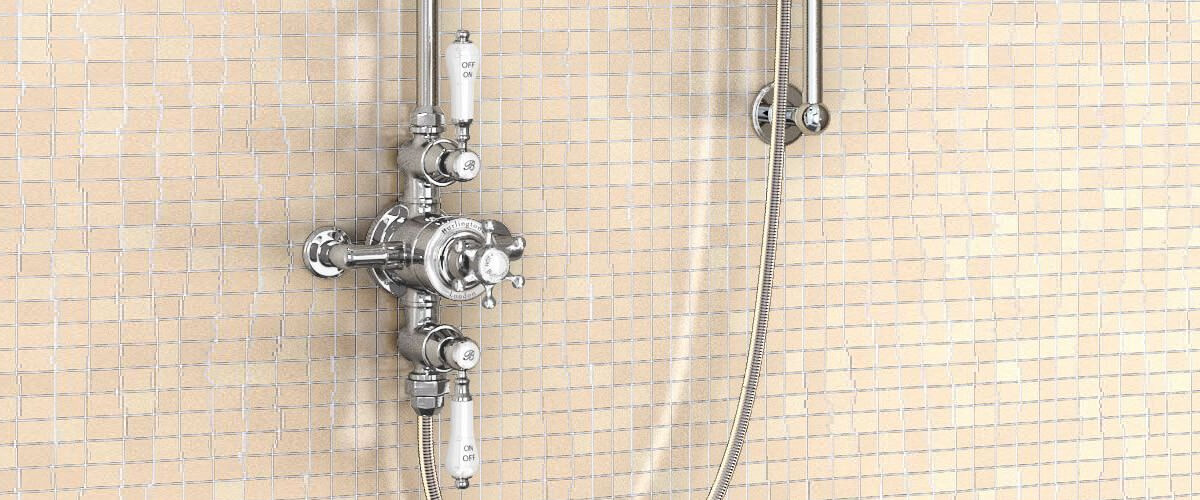
The clue is in the name. Thermo = temperature and static = unmoving. A thermostatic valve will keep your shower from going above a certain temperature (usually a factory setting, though some models allow you to select the desired maximum temperature yourself.) By automatically reacting to any change in the flow of hot or cold water, such a shower valve can instantly adjust the mixture of water flowing from the shower to ensure a constant flow that never exceeds a safe temperature.
How do Thermostatic Valves Work?
The clever mechanism of these valves is simple but effective. It has separate inlet ports for hot and cold water, both of which flow through a thermostat element. This element contracts or expands as changes in water temperature and pressure occur, which in turn moves a sliding valve which controls the shower output. If the cold water supply starts to weaken or fail (if the toilet downstairs flushes, or someone turns on the taps), then this valve will throttle the hot water supply to match, keeping the shower at a constant safe temperature. If the cold water totally stops, the valve will shut down the shower outlet completely to protect you from a scalding.
Why Thermostatic Valves are Better Than Manual Valves?
The main benefit of thermostatic valves is safety. Under some circumstances, a too-hot shower can cause serious injury to anyone. This becomes especially worrisome in a home with small children or elderly family members who are at higher risk of burns. With a properly fitted thermostatic valve, you have peace of mind knowing that your shower will never spray water above a safe temperature. The temperature control of these valves also works the other way, so no cold shocks if the hot water runs out suddenly! This all means that you can relax completely and enjoy your shower worry-free.
There are also real ecological and financial benefits to installing a thermostatic valve. By controlling the flow of hot water, it uses much less energy. It also makes it easy for you to implement water-saving measures if you like. For example, you can shut off the shower while you shampoo without stressing about finding just the right temperature all over again. As soon as you turn the water back on, your shower will deliver perfectly heated water instantly.
Manual Shower Valves
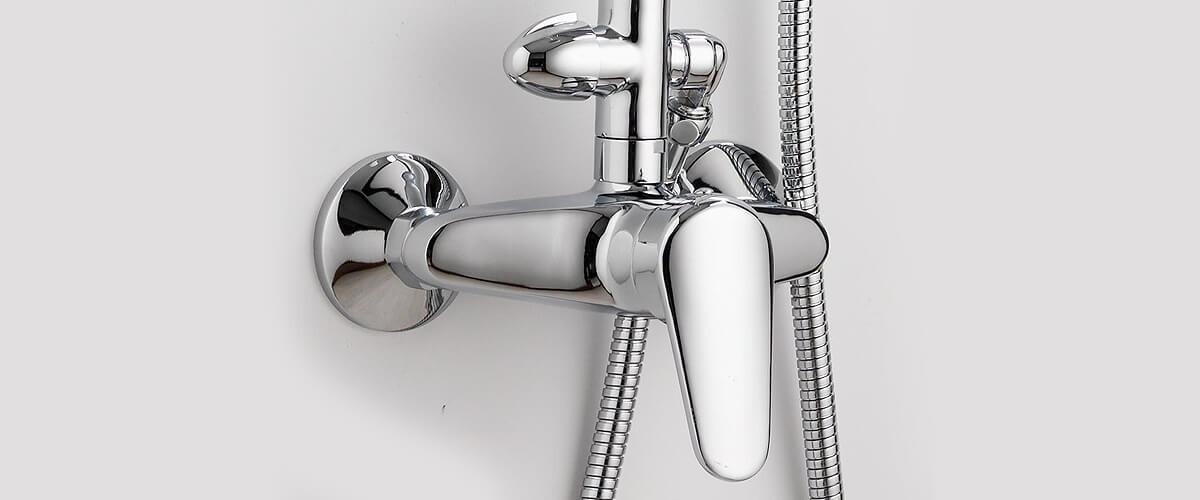
Manual shower valves are the simplest solution on the market. The cold and hot water inputs are mixed in the valve, and a single manually operated lever controls both the flow and the temperature of the water. One thing to be aware of with manual shower valves is that they have no limit to the temperature and will not shut off automatically in the case of hot or cold water failure. Depending on your water heater this means that your shower could become dangerously hot enough to cause scalds. This may be an issue in a house with small children, where safety issues are paramount, or if you live with many people: someone flushing the toilet or starting the washing machine in another part of the house can result in an unpleasant shock. Manual valves can work well for smaller adult households or when paired with an overflow filler or pull out handset for the bath where it’s not as important to have strict temperature control.
Cost Effective
Manual valves are the most economical choice on the market and come in a wide range of styles which will complement any interior design. You can find a beautiful, affordable fixture for a fraction of the price you might spend on some thermostatic models.
Concealed or exposed?
You have two choices when picking out a new manual shower valve. In a concealed shower valve, all the plumbing, pipes, and outlets are hidden away behind the wall for a clean, minimalist look. Exposed shower valves have their plumbing “on display” which can suit a modern or industrial themed bathroom.
How to choose the right one?
When selecting a manual shower valve, don’t forget to check the pressure rating. Some models which work with a diverter can only work with high pressure systems, but most will work with either high or low-pressure systems of all recognised types, including gravity, mains, pumped and combi boilers. Just make sure that your system falls within the listed minimum and maximum pressure rating for your chosen valve. Where possible, find out the flow rate of the valve. It will give you a clear idea of the performance you can expect
Types of Shower Heads
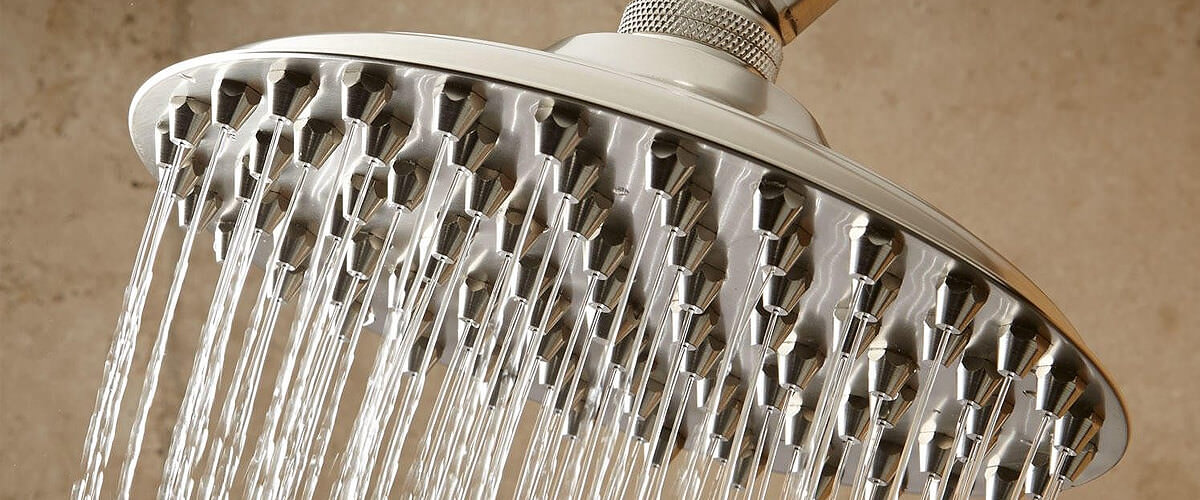
If you plan just to take short showers and don't need anything too elaborate, you can go with a standard fixed shower head. These attach directly to a wall, and while some models have adjustable heights and different settings, they are fairly simple compared to other versions on the market. Most are fairly affordable, though, and they'll do their job just fine.
If you want a greater range of motion out of your shower, consider buying a hand-held shower head. Instead of being permanent fixtures on your shower wall, hand-held shower heads are removable, making them good for getting to hard-to-reach places or washing something other than an adult body such as children or pets. They don't work quite well if you just want to stand underneath a deluge of water and take a short shower.
If you want the best of both worlds when it comes to these products, you can always get a two-in-one model. These attach firmly to a wall fixture over your head if you just want to stand under your shower head, but they can also be removed if you need a hand-held one instead.
No matter what kind of shower head you want, most modern heads come with various settings, and some even come equipped with features to make them resistant to hard water buildup and other kinds of wear and tear.
Knowing When to Replace Your Shower Head
The most obvious sign that you need a new shower head is a distinct lack of water pressure. When you aren't using your shower, water still sits in your pipes until you turn it on. As clean as your water may appear to be, it does contain things that build up in your pipes and on the inside of your shower head. Eventually, this buildup will start to create a blockage in your pipes and your shower head, causing a drop in water pressure when showering. This is a bigger and more common problem in homes that have hard water, but it can happen to anybody's bathroom if you go too long without cleaning or replacing your shower head.
The product can be cleaned with some white vinegar or a cleaner that removes calcium deposits, but if the problem is too severe and your low water pressure is making showering difficult, it's time to buy a new shower head.
Why Consider Shower Pumps?
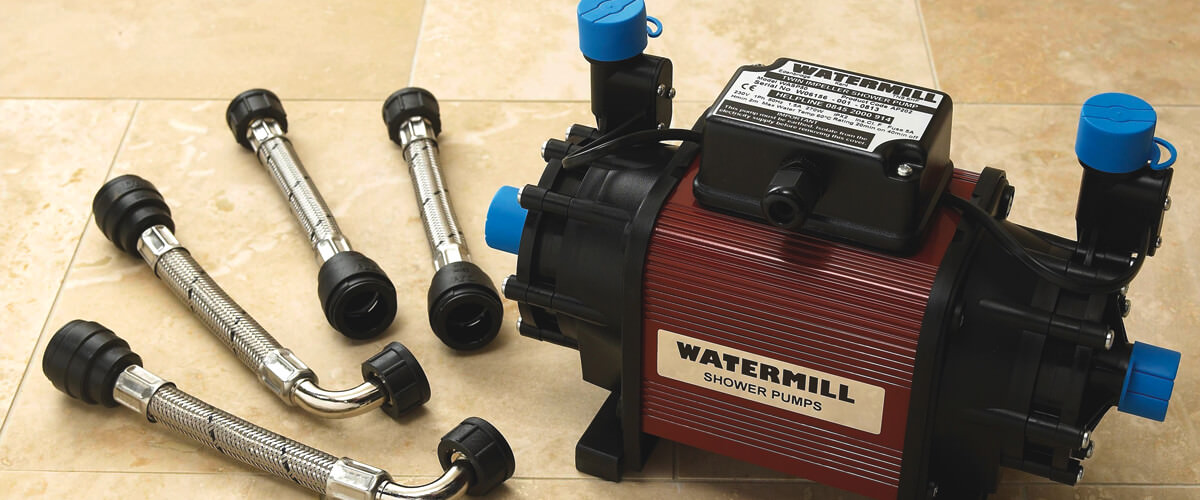
If you have a newly-fitted water system that gives you great water pressure, you may not need a pump to get a powerful shower. On the other hand, you may have a gravity-fed water system, like most homes in the UK, and that can result in low pressure and disappointing shower experience. Shower pumps are specifically designed to boost the water flow to your shower when you’re using it, giving you the best possible showering conditions every day. The type of pump that will work best for your home will depend on several things, including the type of cold and hot water tanks you have at the moment, any planned changes to your plumbing because of your bathroom or home refurbishment, and the number of power showers you want to pump to. Getting the right advice at the planning stage will help you to select the best shower pump first time.
An Important Purchase
If you want to make your shower work beautifully as well as look fantastic, you need to consider the benefits that shower pumps can bring. Low water pressure means that you can’t rely on your shower to be invigorating or refreshing. That’s why it’s important to check your current system – with the help of your plumber – so that you make the right choices at each stage of your new bathroom project.